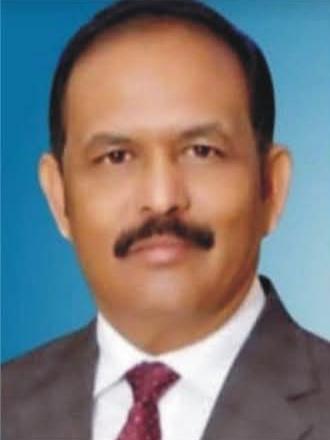Despite the claims of MAGA Prez TRump doesn’t understand the abcd of Americanism (ii)- If Prez Trump is not able to
Teaching faith in America's schools. By Dilara Hafiz

The challenge of providing basic religious knowledge as part of the American school curriculum needs to be met with a bold, new approach. The separation of church and state has left teachers and administrators loathe to broach the subject of religion in the classroom. However, it is essential to begin these discussions at a time when conversations of terrorism, politics and war revolve around basic misconceptions about each other's beliefs, especially Islam.
Placing religion within its historical context, as well as an examination of current practices and shared beliefs, should be part of essential education if the coming generation is to overcome the rising tide of intolerance.
Wouldn't it be wonderful to hear talk about the "Judeo-Christian-Islamic tradition" rather than treating Islam as "the other"? All three religions encompass so many similar lessons that they must be taught in conjunction with each other. In addition, Buddhism, Hinduism and Sikhism, not to mention the growing voice of agnostics and atheists, should not be overlooked as people are becoming increasingly interconnected.
I am privileged to have given over 300 presentations about Islam since 2002. The overwhelming commonality about these experiences is that my audiences generally know little about Islam. And what little they know is predominantly negative! Extremist groups and internet blogs are taken at face value as representing entire religious groups. Lack of knowledge is easily replaced with ill will and even hatred.
Although the roots of Judaism, Christianity and Islam are briefly studied in both middle and high school curriculums across the country, the historical focus leaves students unaware of the state of current beliefs and practices, as well as commonalities, within these faith traditions. Spending only a few days or perhaps a week per religion leaves little time for detailed discussion. Therefore, the gaps in knowledge are mistakenly filled in by media sound bites or spurious Internet rumours.
Rather than learning about each religion in isolation, national interfaith groups could formulate age-appropriate courses on religion that would provide the basics of the five most populous religions in a unified and cross-disciplinary style. Religion is a sensitive, private issue–and rightly so. However, ignoring the relevance of knowledgeable religious discourse does our students a disservice. After all, schools are tasked with providing the tools to produce well-rounded, civic-minded, graduates who acknowledge the basic freedoms guaranteed under the US Constitution.
What form could this educational packet take? It needs to be non-proselytizing, mindful of the diversity of practices amongst cultures within each faith and, above all, non-judgmental. Teachers should distinguish between simple ignorance and blind prejudice about a faith group.
Facing stereotypes head on through games, role-playing, stories, and holidays remain popular teaching techniques that can prove immensely useful in initiating spirited discussions that may reveal more commonalities than are readily apparent to students. But above all, teachers need to be confident that the basic religious facts in their curriculum stem from the most widespread, tolerant interfaith perspectives from each faith tradition, while acknowledging the historical and ongoing debates within faith traditions.
Students are on the front lines in the battle for a civil society that focuses on social justice, equality under law and freedom of religion. Their best weapon is honest, factual education.
As a Muslim, I feel that dispelling misconceptions about Islam is urgently necessary. But as an American, I realize that teaching Islam in isolation will only increase the "otherising" of Muslims, whereas placing Islam into context as the third Abrahamic faith will create much needed goodwill between faith communities.
Additionally, focusing on the positive messages of "faith and works" common in every religion can be the common thread binding citizens together. Even those of little or no faith can gather together with their neighbours to build bridges of understanding. Creating a simple educational unit which covers basic religious beliefs is a starting point, and we need to start now.
###
* Dilara Hafiz is Vice President of the Arizona Interfaith Movement and co-author of The American Muslim Teenager's Handbook. This article was written for the Common Ground News Service (CGNews).
Source: Common Ground News Service (CGNews), 15 December 2009, www.commongroundnews.org
Copyright permission is granted for publication.
Placing religion within its historical context, as well as an examination of current practices and shared beliefs, should be part of essential education if the coming generation is to overcome the rising tide of intolerance.
Wouldn't it be wonderful to hear talk about the "Judeo-Christian-Islamic tradition" rather than treating Islam as "the other"? All three religions encompass so many similar lessons that they must be taught in conjunction with each other. In addition, Buddhism, Hinduism and Sikhism, not to mention the growing voice of agnostics and atheists, should not be overlooked as people are becoming increasingly interconnected.
I am privileged to have given over 300 presentations about Islam since 2002. The overwhelming commonality about these experiences is that my audiences generally know little about Islam. And what little they know is predominantly negative! Extremist groups and internet blogs are taken at face value as representing entire religious groups. Lack of knowledge is easily replaced with ill will and even hatred.
Although the roots of Judaism, Christianity and Islam are briefly studied in both middle and high school curriculums across the country, the historical focus leaves students unaware of the state of current beliefs and practices, as well as commonalities, within these faith traditions. Spending only a few days or perhaps a week per religion leaves little time for detailed discussion. Therefore, the gaps in knowledge are mistakenly filled in by media sound bites or spurious Internet rumours.
Rather than learning about each religion in isolation, national interfaith groups could formulate age-appropriate courses on religion that would provide the basics of the five most populous religions in a unified and cross-disciplinary style. Religion is a sensitive, private issue–and rightly so. However, ignoring the relevance of knowledgeable religious discourse does our students a disservice. After all, schools are tasked with providing the tools to produce well-rounded, civic-minded, graduates who acknowledge the basic freedoms guaranteed under the US Constitution.
What form could this educational packet take? It needs to be non-proselytizing, mindful of the diversity of practices amongst cultures within each faith and, above all, non-judgmental. Teachers should distinguish between simple ignorance and blind prejudice about a faith group.
Facing stereotypes head on through games, role-playing, stories, and holidays remain popular teaching techniques that can prove immensely useful in initiating spirited discussions that may reveal more commonalities than are readily apparent to students. But above all, teachers need to be confident that the basic religious facts in their curriculum stem from the most widespread, tolerant interfaith perspectives from each faith tradition, while acknowledging the historical and ongoing debates within faith traditions.
Students are on the front lines in the battle for a civil society that focuses on social justice, equality under law and freedom of religion. Their best weapon is honest, factual education.
As a Muslim, I feel that dispelling misconceptions about Islam is urgently necessary. But as an American, I realize that teaching Islam in isolation will only increase the "otherising" of Muslims, whereas placing Islam into context as the third Abrahamic faith will create much needed goodwill between faith communities.
Additionally, focusing on the positive messages of "faith and works" common in every religion can be the common thread binding citizens together. Even those of little or no faith can gather together with their neighbours to build bridges of understanding. Creating a simple educational unit which covers basic religious beliefs is a starting point, and we need to start now.
###
* Dilara Hafiz is Vice President of the Arizona Interfaith Movement and co-author of The American Muslim Teenager's Handbook. This article was written for the Common Ground News Service (CGNews).
Source: Common Ground News Service (CGNews), 15 December 2009, www.commongroundnews.org
Copyright permission is granted for publication.
You May Also Like
Pakistan is an Islamic country where the majority religion is Islam while 4% percent of the population is minorities including Hindus, Sikhs,
Every year on 16 November, the world observes International Tolerance Day, established by UNESCO and the United Nations in 1995. The purpose of thi

"Trial of Pakistani Christian Nation" By Nazir S Bhatti
On demand of our readers, I have decided to release E-Book version of "Trial of Pakistani Christian Nation" on website of PCP which can also be viewed on website of Pakistan Christian Congress www.pakistanchristiancongress.org . You can read chapter wise by clicking tab on left handside of PDF format of E-Book.







